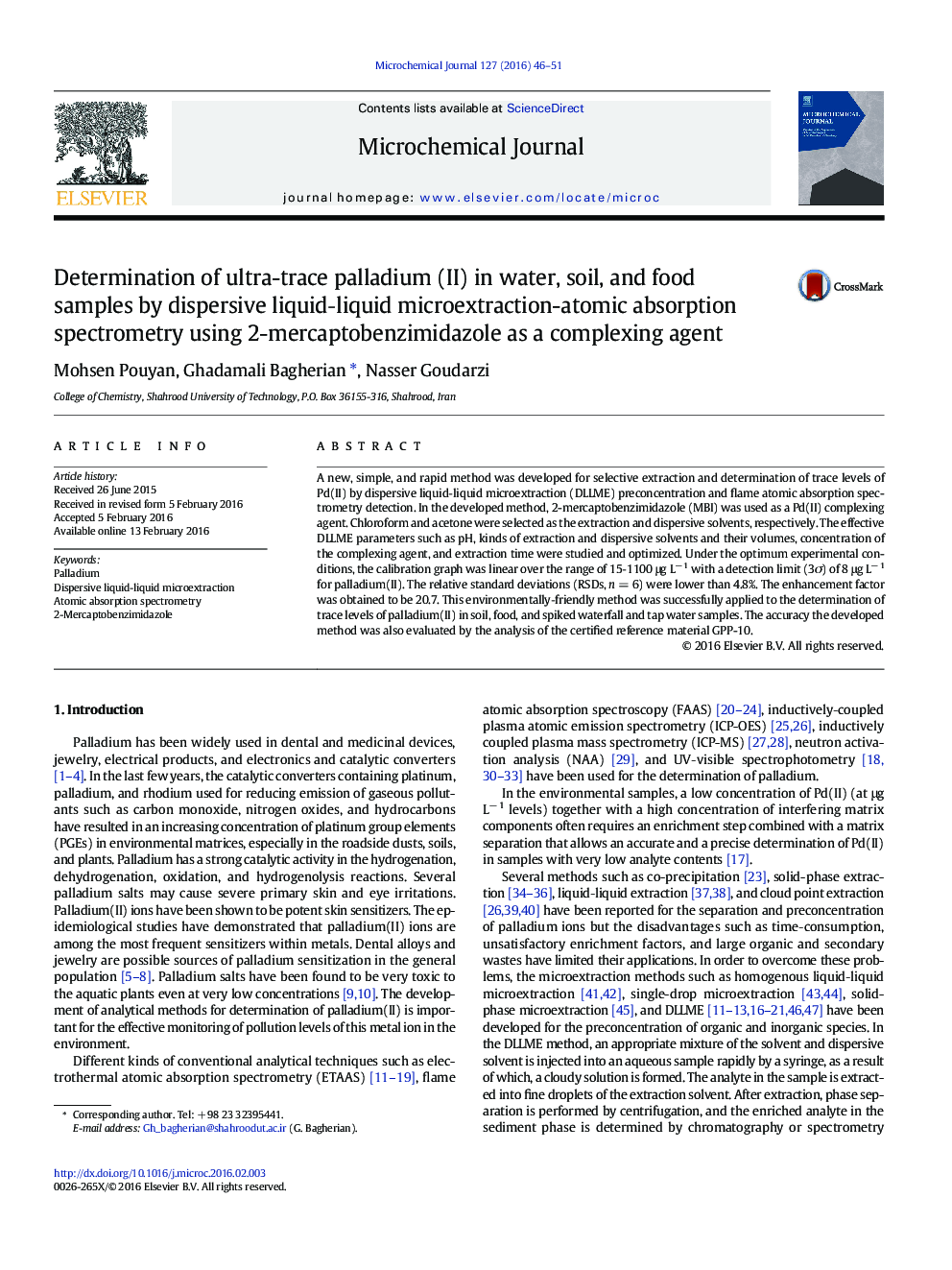| Article ID | Journal | Published Year | Pages | File Type |
|---|---|---|---|---|
| 1227499 | Microchemical Journal | 2016 | 6 Pages |
•In this method, 2-mercaptobenzimidazole(MBI) was used as a chelating agent, which formed a stable and hydrophobic complex with palladium(II) ions.•The reaction between Pd(II) and MBI is very fast.•2-mercaptobenzimidazole(MBI) is a selective reagent for Pd(II); thus, the DLLME has good selectivity.•The developed method is a selective, rapid, sensitive, and an environmentally friendly method for ultra-trace analysis of Pd.
A new, simple, and rapid method was developed for selective extraction and determination of trace levels of Pd(II) by dispersive liquid‐liquid microextraction (DLLME) preconcentration and flame atomic absorption spectrometry detection. In the developed method, 2-mercaptobenzimidazole (MBI) was used as a Pd(II) complexing agent. Chloroform and acetone were selected as the extraction and dispersive solvents, respectively. The effective DLLME parameters such as pH, kinds of extraction and dispersive solvents and their volumes, concentration of the complexing agent, and extraction time were studied and optimized. Under the optimum experimental conditions, the calibration graph was linear over the range of 15‐1100 μg L− 1 with a detection limit (3σ) of 8 μg L− 1 for palladium(II). The relative standard deviations (RSDs, n = 6) were lower than 4.8%. The enhancement factor was obtained to be 20.7. This environmentally‐friendly method was successfully applied to the determination of trace levels of palladium(II) in soil, food, and spiked waterfall and tap water samples. The accuracy the developed method was also evaluated by the analysis of the certified reference material GPP-10.
